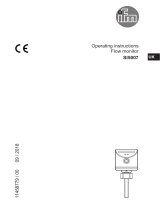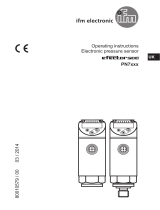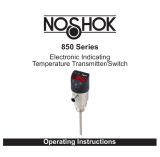
2
Contents
1 Preliminary note ���������������������������������������������������������������������������������������������������3
1�1 Symbols used ������������������������������������������������������������������������������������������������3
2 Safety instructions �����������������������������������������������������������������������������������������������3
3 Function and features ������������������������������������������������������������������������������������������4
4 Function ���������������������������������������������������������������������������������������������������������������5
4�1 Communication, parameter setting and evaluation ���������������������������������������5
4�2 Switching function ������������������������������������������������������������������������������������������6
4�3 Analogue function �����������������������������������������������������������������������������������������6
5 Installation������������������������������������������������������������������������������������������������������������8
6 Electrical connection ��������������������������������������������������������������������������������������������8
7 Operating and display elements ��������������������������������������������������������������������������9
8 Menu ������������������������������������������������������������������������������������������������������������������10
8�1 Menu structure ���������������������������������������������������������������������������������������������10
8�2 Explanation of the menu ������������������������������������������������������������������������������ 11
9 Parameter setting ����������������������������������������������������������������������������������������������12
9�1 Parameter setting general ���������������������������������������������������������������������������12
9�2 Setting the output signal ������������������������������������������������������������������������������14
9�2�1 Setting the output function ������������������������������������������������������������������14
9�2�2 Setting the switching limits �����������������������������������������������������������������14
9�2�3 Scaling the analogue value ����������������������������������������������������������������14
9�3 User settings (optional) ��������������������������������������������������������������������������������15
9�3�1 Setting the unit of measurement for the system pressure ������������������15
9�3�2 Configuring the display �����������������������������������������������������������������������15
9�3�3 Zero-point calibration ��������������������������������������������������������������������������15
9�3�4 Setting the delay time for the switching outputs ���������������������������������15
9�3�5 Setting the output polarity �������������������������������������������������������������������16
9�3�6 Setting the damping for the switching outputs ������������������������������������16
9�3�7 Setting the damping for the analogue output ��������������������������������������16
9�4 Service functions �����������������������������������������������������������������������������������������16
9�4�1 Reading the min�/max� values for the system pressure ����������������������16
10 Operation ���������������������������������������������������������������������������������������������������������17
10�1 Read the set parameter values �����������������������������������������������������������������17
10�2 Fault indication ������������������������������������������������������������������������������������������17
























